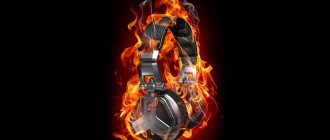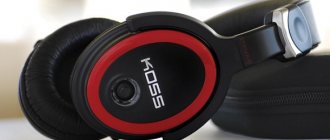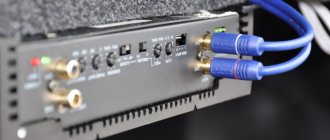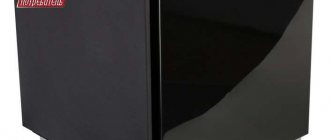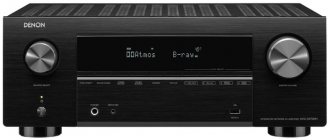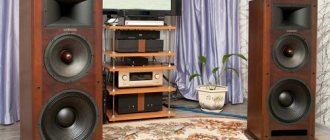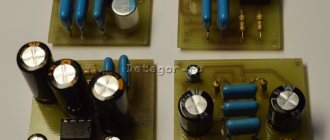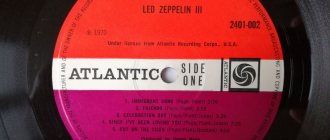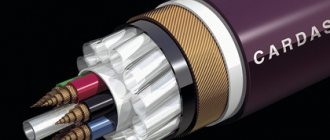In the modern world, the construction of various facilities and the associated installation of power supply lines are carried out year-round. If in summer weather conditions do not interfere with the laying of cable networks, then in winter installation work requires a special approach.
Cable installation in winter is difficult due to low temperatures. In the cold, cracks and breaks may appear in the places where the wires bend in the plastic materials of the sheath and insulation. Damaged areas pose a potential danger, as they are a source of leakage current and increase the likelihood of a short circuit. At best, the problem leads to energy losses and accelerated wear of the electrical line; at worst, it leads to fires, explosions and casualties.
If temperature conditions do not correspond to the parameters specified in SNiP for a particular cable, installation in winter is carried out only after warming up. This procedure increases the elasticity of the insulation and shell material and significantly reduces the risk of damage.
Features of cable heating
To give wires flexibility, three heating methods are used:
- warm room or mobile trailer;
- tent with heat guns;
- transformer.
In a room, trailer or tent, the cable drum warms up for 18–72 hours. If there is no warm room and if urgent installation is necessary, a transformer is used. The procedure is carried out right at the installation site - when current is applied, the cable sheath warms up to +20 to +30 °C - depending on the outside temperature and the required flexibility.
With any heating method, the ends of the cable are sealed to prevent the penetration of condensation. Most often, special end couplings are used for these purposes.
“Warming up the wires” as a metaphysical phenomenon, article.
We offer our readers our own attempt to summarize scattered facts from the life of the cable issue and formulate some advice for Hi-Fi and High-end lovers.
As audio technology improves, manufacturers and consumers are paying more and more attention to details that previously simply fell out of consideration due to, we would say, the insignificance of the problems. They had more important tasks ahead of them. Let us remember, for example, that at the dawn of personal technology we were somehow not particularly interested in the design and ergonomics of computer mice; the presence of at least some kind of mouse was much more important. There were fewer games and programs with a developed graphical interface; the keyboard provided almost all the necessary functions. Look at today's mice, at least for the Mac, and those are no longer enough, you want more - a good multi-touch... Since the advent of a computer mouse on a mechanical ball, specialists from various fields of knowledge gradually drew attention to it: designers, orthopedists, psychologists, opticians , electronics, etc. Now the mouse is no longer what it was before.
The same is true in audio technology. As the main equipment improved: sources, speaker amplifiers, we began to pay more and more attention to the details and conditions under which that very “sound” appears.
Surge filters, power regenerators, supports, cones, vibration pods, cables - and just about anything else audiophiles are busy with today. Even those who demonstratively make fun of neurotic audiophiles themselves quietly rant on the forums about the same thing, although they deny the significance of all this “murder,” but they do rant.
This means that all these issues have moved from the category of insignificant and unworthy of attention to the category of first actively discussed, and then requiring theoretical justification and a serious approach on the part of manufacturers. Designers, electronics engineers, physicists, chemists and even specialists from the space industry got involved. Take a look at the cables of the American companies Analysis Plus and Nordost; specialists in space communications and signal transmission and developers of the latest NASA materials take part in their development.
The cost of some samples of interconnects and speaker cables from these reputable companies is very close to the prices of the equipment with which they will work.
It’s worth thinking about: is the lack of money in your own pocket or the presence of once completed electrical engineering credits a sufficient argument for doubting the benefits of an expensive cable?
Looking at some forums, you can see a steady circulation of some myths that have taken root in the minds of skeptics. Here are some of them:
- Myth - 1. The high cost of the cable is determined solely by the price of materials: copper 6-7 nines, silver, gold.
- Myth - 2. The sound of an expensive cable is no better than that of a cheap one.
- Myth - 3. A heated cable does not sound better than an unheated one.
- Myth - 4. The direction in which the conductor is rolled determines its direction when it is included in the system. (There is a substitution of understanding of the features of the organization of technology and the vector of the production process, from the beginning to the end of the production of the finished cable.)
Besides:
Audiophiles have noticed that heated cables sound better than unheated ones, and this statement applies to both expensive and cheap copies. The time it takes for a cable to warm up with a useful audio signal, according to one reputable cable manufacturing company, is ~ 1.5 weeks (about 10 days). The sound enhancement effect disappears (degrades) after some time if the cable is not used.
An attempt to bring order to our ideas, for example, about the degree of influence of the heating of interconnects and speaker cables on the sound in general or a very specific set, in particular, comes up against the need to take into account too many factors.
When performing such an analysis, you will have to consider what changes occur in the conductor under the influence of an electrical signal, while drawing on fresh data from several branches of physics, such as classical electronic theory, electrodynamics, materials science, solid state physics, etc. Moreover, a quantitative analysis of processes, in contrast to a qualitative one, is not very easy to perform; it is enough to remember that to model the nature of the interaction of current electrons with the atoms of the nodes of the crystal lattice of a conductor, an entire theory was developed (“Phonon Theory”, Tamm I. E.). Scientists, not having at that time the necessary mathematical apparatus and the physical ability to take into account all the interactions in the crystal lattice of a conductor, then introduced virtual particles - phonons, that is, “pseudo-particles” that obey the laws of propagation of acoustic waves. This made it possible to simulate the oscillatory phenomena of conductor lattice nodes. Similar techniques were used by scientists in the 17th and 18th centuries, when the science of “thermodynamics” did not yet exist. Let us recall caloric, introduced by Lavoisier in 1783. It allowed, before the adoption of the molecular kinetic theory, to carry out calculations, the results of which helped in practical activities.
Skeptics will say: “Avon has gone to hell. Phonons, caloric, electrons - why?” They say that generalized and well-known characteristics are decisive for a cable: resistance, capacitance, inductance. Yes, everything is correct, but concerned audiophiles would like to get a more definite answer to the reason for the difference in sound between cables with the same electrical characteristics, but different materials of conductors and insulators (copper, silver, Teflon or polypropylene) ... Why does a heated cable, while maintaining the same characteristics, does it sound different than unheated? What is the meaning of cable directionality? Audio enthusiasts would also like to hear practical advice, for example, how long to warm up the cables and with what signal.
We offer our readers our own attempt to summarize scattered facts from the life of the cable issue and formulate some advice for lovers of hi-fi and high-end.
Let us express our conviction that the answers to the secrets of the subtle nuances of the sound picture, for which the connections of audio system components (cables) are responsible, lie in the field of the microcosm, crystal physics, etc. Familiarity with the work of some well-known companies producing cable products allows us to draw such conclusions.
For example, samples of cables with active insulation, or with tungsten conductors, as well as cables heated by a high-voltage arc, began to appear.
Not all cases of technological innovations in the field of conductors that we know of fall into the category of marketing gimmicks. Many of them have years of hard work, experimentation and patented secrets behind them. That is why it is difficult to comment on the principles embedded in them. Many successful samples found experimentally by manufacturers may still have to wait a long time for their scientific explanation. That is why for some time it is necessary to rely on empirical experience and a generalized assessment of physical and, today, “metaphysical” processes.
Now we have come to the most interesting part: to describe in “simple” words the processes occurring in the conductor, to raise questions the answers to which (or rather, some of them) have not yet been given by fundamental science or keep this knowledge under the heading “Top Secret!” (for example, the works of Nikola Tesla).
The most difficult thing for us was to find these very “words” that can convey the meaning of the processes taking place, in our opinion, and we chose “images”. Typically, the audiophile community uses imagery to convey information to their peers. For example: “Warm Sound”, “Unlimited Bass”, etc. We also allowed ourselves to compare the hearing aid of an audiophile with the nose and tongue of a sommelier (professional wine taster), who distinguishes the age of a drink by smell and taste. And we ended up with an image for assessing changes in “taste” differences in the sound of wires - vodka! When we were young, we hated drinking vodka from plastic glasses - why?
Now we will begin to describe the processes occurring in acoustic wires and translate them into “images”.
From Phonon Theory
:
A free electron flies between two atoms of the crystal lattice, they repel, exciting the entire chain of crystals according to the laws of propagation of sound waves. Ultrasonic noise appears, the spectrum of which is different for silver and copper. As a comparison image, we chose silver and steel guitar strings that have the same physical dimensions, are tuned to the same note, and sound different.
Heating in this case increases the amplitude of vibrations of lattice atoms in the conductor. When alternating current passes through a conductor (in the region of sound vibrations), the skin effect pushes free electrons onto the surface of the conductor, and some of them “plug” electron holes in the dielectric, resulting in artifacts. Therefore, the dielectric material is very important. Warming up the cable stabilizes this exchange to a linear level, and the wire is able to “remember” this state for some time.
Under the influence of a passing current, the dipoles of the atoms of a conductor are able to align in one direction (polarize) and can maintain this state after exposure. There is a “relaxation” period for various conductor materials, which no one publishes. When asked about the time it takes to warm up a conductor, we can cite the opinion of the head of the Atlas company that the time it takes to warm up a cable is calculated in a week. We allow ourselves to assume that the cable retains this state for a period comparable in duration, but its connection requires observing the direction of current flow (arrows and markers on the cables will help you here).
The “color” in the sound of cables, specific to conductor materials, is formed from the noise previously described and is located in the ultrasonic frequency range, which is responsible for the “fronts” of the sound signal, which is perceived as “detail” and “air”. We assume that warming up has little effect on this.
You will most likely hear qualitative changes in cable heating on high-end analog equipment.
To summarize this article (and we plan to describe the operation of cables at the electrical engineering level), we compare “tasting” wires with a similar process - “tasting” vodka. The more types of vodka you try, the more you will become familiar with its flavor (pun intended!). Choose, because the extra ones do not make it possible to conduct a “pure” experiment.
“Warming up the wires” as a metaphysical phenomenon. Part 2.
“Warming up the wires” as a metaphysical phenomenon. Part 3.
To be continued.
Sincerely, "F-lab"
This article has been read 45,766 times.
The article is included in the sections:
Useful tips
Rules for laying cables in the ground in winter
Warming up of the cable is carried out after preparing the route and checking it for compliance with the design, since work on laying lines in winter has strictly regulated deadlines. Installation of the heated cable must be carried out within the following time intervals:
- 60 minutes - from 0 to -10 °C;
- 40 minutes - from -10 to -20 °C;
- 30 minutes - at -20 °C and below.
When laid, a cable that has been subjected to heating should not be subject to bending with a radius less than the permissible one.
Immediately after laying the cable, it should be covered with the first layer of crumbly soil. Then, after the cable has cooled, the trench can be finally backfilled and compacted.
